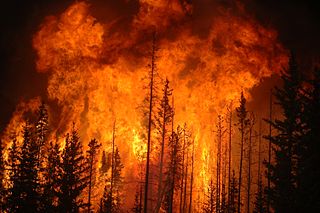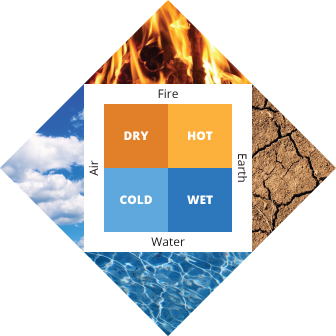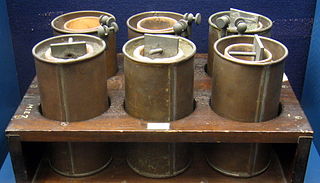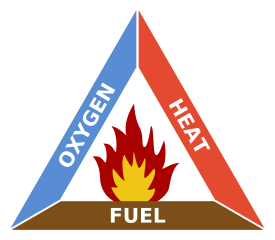Write an Equation for the Reaction in Which H2c6h7o5ã¢ë†â€™(Aq) Acts as a Base in H2o(L).
(This is an updated version of the Chemical Reactions module. For the previous version, see this page.)
Chemical reactions happen absolutely everywhere. While we sometimes associate chemical reactions with the sterile environment of the test tube and the laboratory - nothing could be further from the truth. In fact, the colossal number of transformations make for a dizzying, almost incomprehensible array of new substances and energy changes that take place in our world every second of every day.
In nature, chemical reactions can be much less controlled than you'll find in the lab, sometimes far messier, and they generally occur whether you want them to or not! Whether it be a fire raging across a forest (Figure 1), the slow process of iron rusting in the presence of oxygen and water over a period of years, or the delicate way in which fruit ripens on a tree, the process of converting one set of chemical substances (the reactants) to another set of substances (the products) is one known as a chemical reaction.

Though chemical reactions have been occurring on Earth since the beginning of time, it wasn't until the 18th century that the early chemists started to understand them. Processes like fermentation, in which sugars are chemically converted into alcohol, have been known for centuries; however, the chemical basis of the reaction was not understood. What were these transformations and how were they controlled? These questions could only be answered when the transition from alchemy to chemistry as a quantitative and experimental science took place.
Historical context
Beginning in the early Middle Ages, European and Persian philosophers became fascinated with the way that some substances seemed to "transmute" (or transform) into others. Simple stones, such as those that contained sulfur, seemed to magically burn; and otherwise unimpressive minerals were transformed, like the ore cinnabar becoming an enchanting silvery liquid metal mercury when heated. Alchemists based their approach on Aristotle's ideas that everything in the world was composed of four fundamental substances - air, earth, fire, and water (Figure 2).

As such, they proposed, and spent generations trying to prove, that less expensive metals like copper and mercury could be turned into gold. Despite their misguided approach, many early alchemists performed foundational chemical experiments - transforming one substance into another, and so it is difficult to point to a specific date or event as the birth of the idea of an ordered, quantifiable chemical reaction. However, there are some important moments in history that have helped to make sense of it.
Lavoisier: Law of Mass Conservation
Antoine Lavoisier was a French nobleman in the 1700s who began to experiment with different chemical reactions. At the time, chemistry still couldn't be described as being a true, quantitative science. Most of the theories that existed to explain the way that substances changed relied upon Greek philosophy, and there was precious little experimental detail attached to the alchemist's tinkering.
However, during the second half of the 18th century, Lavoisier performed many quantitative experiments and observed that while substances changed form during a chemical reaction, the mass of the system – or a measure of the total amount of "stuff" present – did not change. In doing so, Lavoisier championed the idea of conservation of mass during transformations (Figure 3). In other words, unlike the alchemists before him who thought that they were creating matter out of nothing, Lavoisier proposed that substances are neither created nor destroyed, but rather change form during reactions. Lavoisier's ideas were published in the seminal work Traité élémentaire de Chimie in 1789 (Lavoisier, 1789), which is widely hailed as the birth of modern chemistry as a quantitative science.

Proust: Law of Constant Composition
Joseph Proust was a French actor who followed in Lavoisier's footsteps. Proust performed dozens of chemical reactions, starting with different amounts of various materials. Over time he observed that no matter how he started a certain chemical reaction, the ratio in which the reactants were consumed was always constant. For example, he worked extensively with copper carbonate and no matter how he changed the ratio of starting reactants, the copper, carbon, and oxygen all reacted together in a constant ratio (Proust, 1804). As a result, in the last few years of the 18th century, Proust formulated the law of constant composition (also referred to as the law of definite proportions, Figure 4).
He realized that any given chemical substance (that we now define as a compound) always consisted of the same ratio by mass of its elemental parts regardless of the method of preparation. This was a huge step forward in modern chemistry since it had been previously believed that the substances formed during chemical reactions were random and disordered.

Dalton: Law of Multiple Proportions
The English chemist John Dalton helped make sense of the laws of conservation of mass and definite proportions in 1803 by proposing that matter was made of atoms of unique substances that could not be created or destroyed (see our module Early Ideas about Matter for more information).
Dalton extended Proust's ideas by recognizing that it was possible for two elements to form more than one compound, but that whatever the compound was, it would always contain elements combined in whole number ratios (Dalton, 1808). This observation is known as the law of multiple proportions (Figure 5) and with his atomic theory, helped to cement Lavoisier's observations.

These advancements, taken together, laid the groundwork for our modern understanding of chemical reactions, chemical equations, and chemical stoichiometry, or the process of expressing the relative quantities of reactants and products in a chemical reaction.
Comprehension Checkpoint
____ first theorized that while substances changed form during a chemical reaction, the mass of the system did not change.
Types of chemical reactions
There is a staggering array of chemical reactions. Chemical reactions occur constantly within our bodies, within plants and animals, in the air that circulates around us, in the lakes and oceans that we swim in, and even in the soil where we grow crops and build our homes. In fact, there are so many chemical reactions that occur that it would be difficult, if not impossible, to understand them all. However, one method that helps us to understand them is to categorize chemical reactions into a few, general types. While not a perfect system, placing reactions together according to their similarities helps us to identify patterns, which in turn allows predictions to be made about as yet unstudied reactions. In this module, we will consider and provide some context for a few categories of reactions, specifically: synthesis, decomposition, single replacement, double replacement, REDOX (including combustion), and acid-base reactions.
No matter the type of reaction, one universal truth applies to all chemical reactions. For a process to be classified as a chemical reaction, i.e., one where a chemical change takes place, a new substance must be produced. The formation of a new substance is nearly always accompanied by an energy change, and often with some kind of physical or observable change. The physical change can be of different types, such as the formation of bubbles of a gas, a solid precipitate, or a color change. These changes are clues to the existence of a chemical reaction and are important triggers for further research by chemists.
Synthesis reactions
Prior to Lavoisier's work, it was poorly understood that there were different gases made up of different elements. Instead, various gases were commonly mischaracterized as types of "air" or air missing parts – for example, terms commonly used were "inflammable air," or "dephlogisticated air." Lavoisier thought differently and was convinced that these were different substances. He conducted experiments where he mixed inflammable air with dephlogisticated air and a spark, and he found that the substances combined to produce water. In response, he renamed inflammable air "hydrogen" from the Greek hydro for "water" and genes for "creator." In so doing, Lavoisier was identifying a synthesis reaction. In general, a synthesis reaction is one in which simpler substances combine to form another more complex one. Hydrogen and oxygen (which Lavoisier also renamed dephlogisticated air) combine in the presence of a spark to form water, summarized by the chemical equation shown below (for more on chemical equations see the section called Anatomy of a chemical equation), it represents a simple synthesis reaction.
Equation 1
2H2(g) + O2(g) → 2H2O(l)
Decomposition reactions
In 1774, the scientist Joseph Priestley turned his curiosity to a mineral called cinnabar – a brick red mineral. When he placed the mineral under sunlight amplified by a powerful magnifying glass, he found that a gas was produced which he described as having an "exalted nature" because a candle burned in the gas brightly (Priestley, 1775). Without realizing it, Priestley had discovered oxygen as a result of a decomposition reaction. Decomposition reactions are often thought of as the opposite of synthesis reactions since they involve a compound being broken down into simpler compounds or even elements. In the case of Priestley's oxygen, he had broken down mercury (II) oxide (cinnabar) with heat into its individual elements. The reaction can be summarized in the following equation.
Equation 2
2HgO(s) → 2Hg(l) + O2(g)
Single replacement reactions
The British chemist and meteorologist John Daniell, invented one of the very first practical batteries in 1836 (Figure 6). In his cell, Daniell utilized a very common single replacement reaction. His early cells were complicated affairs, with ungainly parts and complicated constructs, but by contrast, the chemistry behind them was really quite simple.

In certain chemical reactions, a single constituent can substitute for another one already joined in a chemical compound. The Daniell cell works because zinc can substitute for copper in a solution of copper sulfate, and in so doing exchange electrons that are used in the battery cell. The reaction can be summarized as follows:
Equation 3
Zn(s) + CuSO4(aq) → ZnSO4(aq) + Cu(s)
This particular single displacement is called a metal displacement since it involves one metal replacing another metal, and many types of batteries are based on metal replacement reactions. However, several other types of single replacement reactions exist, such as when a metal can replace hydrogen from an acid or from water, or a halogen can replace another halogen in certain salt compounds.
Combustion reactions
The controlled use of fire was a crucial development for early civilization. While it's difficult to pin down the exact time that humans first tamed the combustion reactions that produce fire, recent research suggests it may have occurred at least a million years ago in a South African cave (Berna et al. 2012).
Chemically, combustion is no more than the reaction of a fuel (wood, oil, gasoline, etc.) with oxygen. For combustion to take place there must be a fuel and oxygen gas. However, these reactions often require activation energy (discussed in more detail in the module Chemical Bonding: The Nature of the Chemical Bond), which can be provided by a 'spark' or source of energy for ignition. Fuel, oxygen, and energy are the three things make up what is known as the fire triangle (Figure 7), and any one of them being absent means that combustion will not take place.

In the modern world, many of the fuels that are typically burned for energy, are hydrocarbons – substances that contain both hydrogen and carbon (as discussed in more detail in our Carbon Chemistry module). Plants produce hydrocarbons when they grow, and thus make an excellent fuel source, and other hydrocarbons are produced when plants or animals decay over time (such as natural gas, oil, and other substances). When these fuels combust, the hydrogen and carbon within them combine with oxygen to produce two very familiar compounds, water, and carbon dioxide. One simple example is the combustion of natural gas, or methane, CH4:
Equation 4
CH4(g) + 2O2(g) → CO2(g) + 2H2O(l)
As with the combustion of all fuels, heat and light are products, too, and it is these products that are used to cook our food or to heat our homes.
Reduction-oxidation reactions
Each of the four types of reaction above are sub-categories of a single type of chemical reaction known as redox reactions. A redox reaction is one where reduction and oxidation take place together, hence the name. The individual processes of oxidation and reduction can be defined in more than one way, but whatever the definition, the two processes are symbiotic, i.e., they must take place together.
In one definition, oxidation is described as the process in which a species loses electrons, and reduction is a process where a species gains electrons. In this way, we can see how the pair must take place together. If a chemical substance is to lose electrons (and therefore be oxidized), then it must have another, interdependent chemical substance that it can give those electrons to. In the process, the second substance (the one gaining electrons) is said to be reduced. Without such an electron acceptor, the original species can never lose the electrons and no oxidation can take place. When the electron acceptor is present, it gets reduced and the redox combination process is complete. Redox reactions of this type can be summarized by a pair of equations – one to show the loss of electrons (the oxidation), and the other to show the gain of electrons (the reduction). Using the example of the Daniell cell above,
Equation 5
Oxidation: Zn → Zn2+ +
2e-
Reduction: Cu2+ +
2e- → Cu
The electrons shown being lost by zinc in the first reaction, are the same electrons being accepted by the copper ions in the second. Together, the reactions can be combined to cancel out the electrons on either side of the reactions, into the overall redox reaction:
Equation 6
Zn + Cu2+ → Zn2+ + Cu
Other definitions of oxidation and reduction also exist, but in every case, the two halves of the redox reaction remain symbiotic – one loses and the other gains. The loss from one species cannot happen without the other species gaining.
Double displacement reactions
When soap won't easily produce a lather in water, the water is said to be 'hard'. Hard water causes all kinds of problems that go beyond just making it difficult to form a lather. The buildup of compounds in water pipes (known as 'scale'), can block the flow of water and can cause problems in industrial processes. Textile manufacturing and the beverage industry rely heavily on water. In those situations, the quality of the water can make a difference to the end product, so controlling the water composition is crucial.
Hard water contains magnesium or calcium ions in the form of a dissolved salt such as magnesium chloride or calcium chloride. When soap (sodium stearate) comes into contact with either of those salts, it enters into a double displacement reaction that forms the insoluble precipitate known as 'soap scum'.
A double displacement reaction (also known as a double replacement reaction) occurs when two ionic substances come together and both substances swap partners. In general:
Equation 7
AB + CD → AD + CB
Where A and C are cations (positively charged ions), and B and D are anions (negatively charged).
In the case of the reaction of soap with calcium chloride, the reaction is:
Equation 8
CaCl2(aq) + 2NA(C17H35COO)(aq) → 2NaCl(aq) + Ca(C17H35COO)2(s)
The solid calcium stearate is what we call soap scum, which is formed by the reaction of the soluble sodium stearate salt (the soap) in a double replacement reaction with calcium chloride.
Acid-Base reactions
Acid-base reactions happen around, and even inside of us, all the time. From the classic elementary school baking soda volcano to the process of digestion, we encounter acids and bases on a daily basis.
When a hydrogen atom loses its only electron, it forms a positive ion, H+. This hydrogen ion is the essential component of all acids, and indeed one definition of an acid is that of a hydrogen ion donor. Compounds such as the citric acid in lemon juice, the ethanoic acid in vinegar, or a typical laboratory acid like hydrochloric acid, all give their hydrogen ions away in chemical reactions known as acid-base reactions. The chemical opposites of acids are known as bases, and bases can be defined as hydrogen ion acceptors. Whenever an acid donates a hydrogen ion to a base, an acid-base reaction has taken place, for example, when hydrochloric acid donates a hydrogen ion to a base such as sodium hydroxide:
Equation 9a
HCl(aq) + NaOH(aq) → H2O(l) + NaCl(aq)
A closer look at this reaction reveals that in water the HCl gives away an H+ as shown below:
Equation 9b
HCl(aq) + H2O(l) → H3O+ (aq) + Cl- (aq)
The resulting species, H3O+ (the hydronium ion), can, in turn, act as an acid when it comes into contact with any species that can accept a hydrogen ion, such as hydroxide ions from sodium hydroxide:
Equation 9c
H3O+ (aq) + NaOH(aq) → 2H2O(l) + Na+ (aq)
Combining equations #9a and #9b gives us equation #9c.
Equation #9c can be re-written to show the individual ions that are found in solution, thus:
Equation 9d
H+ (aq) + Cl- (aq) + Na+ (aq) + OH- (aq) → H2O(l) + Na+ (aq) + Cl- (aq)
Removing the spectator ions from the equation above, we get the net ionic equation:
Equation 9e
H+ (aq) + OH- (aq) → H2O(l)
Any chemical reaction that forms water from the reaction between an acid and base as in equation #9e is known as a neutralization reaction.
Comprehension Checkpoint
The type of chemical reaction where a single constituent can substitute for another one already joined in a chemical compound is:
Anatomy of a chemical equation
Chemical equations are always linked to chemical reactions since they are the shorthand by which chemical reactions are described. That fact alone makes equations incredibly important, but equations also have a crucial role to play in describing the quantitative aspect of chemistry, something that we formally call stoichiometry.
All chemical reactions take on the same, basic format. The starting substances, or reactants, are listed using their chemical formula to the left-hand side of an arrow, with multiple reactants separated with plus signs. In the case of a reaction between carbon and oxygen:
To the right hand of the arrow one finds the chemical formulas of the new substance or substances (known as the products) that are produced by the chemical reaction. In this case, since carbon dioxide is the result of burning carbon in the presence of oxygen:
Equation 10b
[Reactants] C + O2 → CO2 [Products]
Since reactions can result in both physical as well as chemical changes, each substance is given a state symbol written as a subscript to the right of the formula, this describes the physical form of the reactants and products. Common state abbreviations are (s) for solids, (l) for liquids, (g) for gases and (aq) for any aqueous substances, i.e., those dissolved in water.
Equation 10c
C(s) + O2(g) → CO2(g)
Finally, in order to ensure that this representation abides by the law of conservation of mass, the equation may need to be balanced by the addition of numbers in front of each species that create equal numbers of atoms of each element on each side of the equation. In the case of the formation of carbon dioxide from carbon and oxygen, there is no need for the addition of such numbers (called the stoichiometric coefficients), since 1 carbon atom and 2 oxygen atoms appear on each side of the equation.
Energy changes
In nature, chemical reactions are often driven by exchanges in energy. In this respect, reactions are generally separated into two categories – those that release energy and those that absorb energy.
Exothermic reactions are those that release energy to the surroundings (Figure 8, right). Combustion reactions are an obvious example because the energy released by the reaction is converted into the light and heat seen in the immediate surroundings.
By contrast, endothermic reactions are those that absorb energy from the surroundings (Figure 8, left). In this situation, one may have to heat up the reaction or add some other form of energy to the system before seeing the reaction proceed.

In both cases it is important to note that energy is neither created nor destroyed, rather it is transferred from one type of energy to another, for example from chemical energy to that of heat or light. The energy that goes into the formation of chemical bonds is exchanged for other types of energy with the environment around that reaction. A classic example is the photosynthesis reaction, in which plants absorb light energy from the sun in order to create bonds between atoms that make up sugars, which are stored as chemical energy for later use by the plant. The process of respiration is essentially the reverse of photosynthesis, where the bonds in sugar molecules are broken and the released energy is then used by the plant.
Comprehension Checkpoint
_____ reactions are those that absorb energy from the surroundings.
The context of chemical reactions
Chemical reactions happen all around us every day. Whether it is a single replacement reaction in the battery of our flashlight, a synthesis reaction that occurs when iron rusts in the presence of water and oxygen, or an acid-base reaction that happens when we eat – we experience chemical reactions in almost everything we do. Understanding these reactions is not an abstract concept for a chemist in a far off laboratory, rather it is critical to understanding life and the world around us. To truly master chemical reactions, we need to understand the quantitative aspect of these reactions, something referred to as stoichiometry, and a concept we will discuss in another module.
Summary
This modules explores the variety of chemical reactions by grouping them into general types. We look at synthesis, decomposition, single replacement, double replacement, REDOX (including combustion), and acid-base reactions, with examples of each.
Key Concepts
- The steps from a qualitative science to quantitative one, were crucial in understanding chemistry and chemical reactions more completely.
- When a substance or substances (the reactants), undergo a change that results in the formation of a new substance or substances (the products), then a chemical reaction is said to have taken place.
- Mass and energy are conserved in chemical reactions. Matter is neither created or destroyed, rather it is conserved but rearranged to create new substances. No energy is created or destroyed, it is conserved but often converted to a different form.
- Chemical reactions can be classified into different types depending on their nature. Each type has its own defining characteristics in terms of reactants and products.
- Chemical reactions are often accompanied by observable changes such as energy changes, color changes, the release of gas or the formation of a solid.
- Energy plays a crucial role in chemical reactions. When energy is released into the surroundings the reaction is said to be exothermic; when energy is absorbed from the surroundings the reaction is said to be endothermic
Write an Equation for the Reaction in Which H2c6h7o5ã¢ë†â€™(Aq) Acts as a Base in H2o(L).
Source: https://www.visionlearning.com/en/library/Chemistry/1/Chemical-Reactions/54
0 Response to "Write an Equation for the Reaction in Which H2c6h7o5ã¢ë†â€™(Aq) Acts as a Base in H2o(L)."
Post a Comment